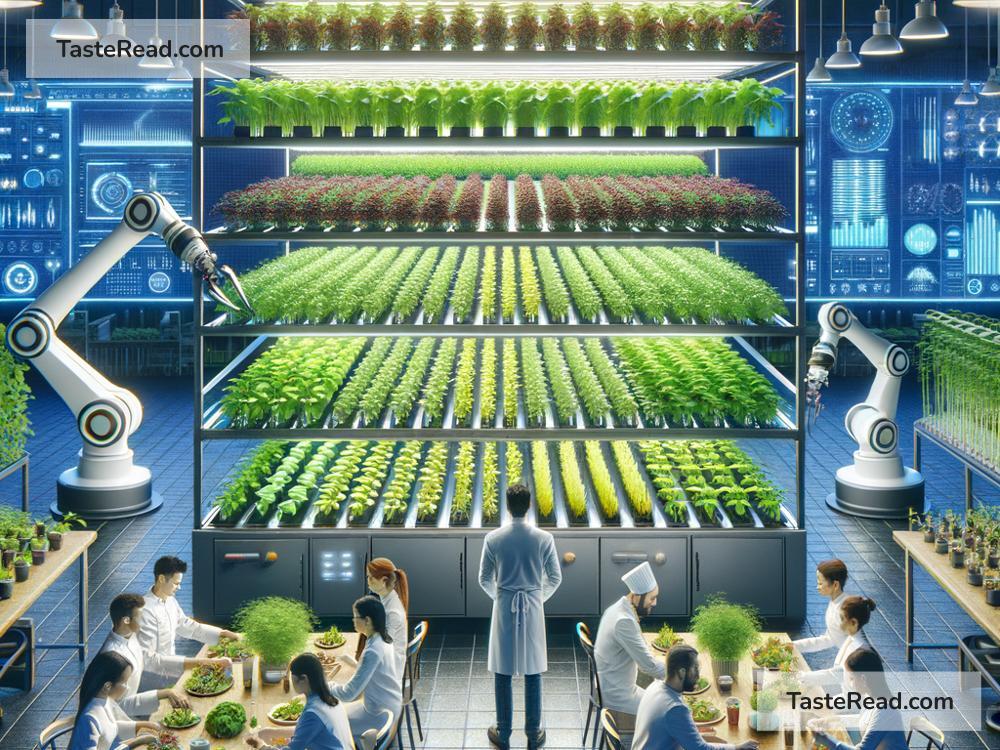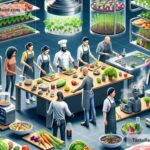The Future of Food and Collaborative Systemic Models
Food is one of the most important parts of life. What we eat gives us energy, keeps us healthy, and brings us together with others. But as the world changes, so does the way we grow, share, and eat food. Climate change, population growth, and resource shortages are making us rethink how food systems work. If we want a better future for food—one that supports both people and the planet—we need to work together. Collaborative systemic models offer a powerful way forward by connecting everyone involved in food, from farmers to consumers, and creating solutions that benefit all.
Challenges in the Food System
Before we explore the future, let’s look at the challenges we face today. The way food is grown, transported, and consumed is creating problems for the environment, our health, and global equity. For instance:
-
Climate Change: Extreme weather, droughts, floods, and rising temperatures are making it harder for farmers to grow crops. At the same time, agriculture is responsible for significant greenhouse gas emissions.
-
Unequal Access: While some parts of the world have access to abundant food, many people still struggle with hunger and malnutrition. Even in developed countries, gaps in income and access affect who gets to eat nutritious food.
-
Food Waste: About one-third of all food produced globally is wasted. This waste not only harms the environment but also takes resources away from people who need them.
-
Overdependence on Monoculture Farming: Many farms grow just one crop, such as wheat, corn, or rice, over large areas. This practice depletes soil nutrients and increases vulnerability to pests and diseases.
The current food system isn’t sustainable. If we keep working in silos—for example, focusing only on profits or local solutions rather than broader impacts—the problems could worsen. That’s why collaboration is key to building a better future for food.
What Are Collaborative Systemic Models?
Collaborative systemic models are ways for different groups to work together to solve big, complex problems. In the food system, this means farmers, governments, businesses, scientists, communities, and consumers come together to rethink how food is grown, distributed, and consumed. Instead of focusing on short-term goals, like profits or immediate fixes, these models aim for long-term solutions that benefit everyone.
Such models aren’t just about sharing ideas; they’re about creating partnerships that combine resources, knowledge, and technologies. For example, instead of competing for profits, food companies could partner with agricultural scientists to develop sustainable farming methods. Governments could collaborate with local communities to improve access to healthy food. By pooling resources and focusing on the bigger picture, systemic change becomes possible.
How Collaborative Models Can Improve the Food System
Here are some ways collaborative systemic models can bring positive change to the future of food:
-
Regenerative Agriculture: Collaborative efforts can help farmers adopt methods that restore soil health, reduce greenhouse gas emissions, and promote biodiversity. For example, a partnership involving farmers, research institutions, and policymakers can lead to widespread adoption of practices like crop rotation and agroforestry.
-
Inclusive Access to Food: Imagine if food producers, governments, and charitable organizations worked together to create better systems for distributing food. Technology-driven solutions, like apps that connect surplus food with people in need, could reduce waste and improve access for vulnerable communities.
-
Technology and Innovation: Collaborative models encourage sharing technological advancements, like vertical farming, lab-grown meat, or precision agriculture tools. With proper funding and cooperation, these innovations can become widely accessible, making food production more efficient and sustainable.
-
Education and Awareness: Collaboration between educators, activists, and businesses can spread knowledge about sustainable eating habits and how consumer choices impact the food system. Small changes in our diets, like eating more plant-based foods or reducing waste, can make a big difference when embraced by entire communities.
-
Global Resilience: By connecting local and global solutions, collaborative systemic models can help the food system adapt to crises like pandemics or extreme weather events. Sharing resources and knowledge across borders ensures that no one is left behind during hard times.
Examples of Collaborative Models
Across the world, hopeful examples of collaboration are already making a difference in food systems:
-
Community-Supported Agriculture (CSA): In CSA programs, consumers partner directly with farmers to buy fresh, local produce. This strengthens local economies and reduces environmental impacts from transporting food long distances.
-
Food Redistribution Networks: Organizations like Feeding America in the U.S. collaborate with businesses, volunteers, and technology platforms to ensure surplus food reaches those who need it most.
-
Regenerative Farming Alliances: Groups like the Savory Institute bring farmers, researchers, and investors together to promote holistic land management practices.
-
Agri-Tech Partnerships: In countries like Singapore, public-private collaborations have invested in urban farming technologies like vertical farms to address land shortages and food security.
The Road Ahead
The future of food lies in collaboration. By working across industries, cultures, and borders, we can create a system that supports people, protects the planet, and ensures long-term sustainability. But there’s no single group or solution that can fix everything—it will take teamwork and shared responsibility.
As consumers, we can play a role by making conscious choices and advocating for policies that promote collaboration. Governments can create environments where partnerships thrive. Businesses can put sustainability ahead of profits and invest in shared goals. Farmers can embrace innovation and be part of networks that share knowledge.
Food connects us all, so solving food system challenges will also connect us. With collaborative systemic models, we are not only reimagining the future of food—we are reimagining a more unified, resilient world. Together, we can build a food system that works for everyone.


